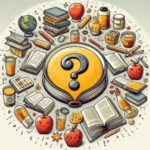Throughout history, books have served as powerful catalysts for change, sparking discussions that challenge societal norms and provoke thought.
In this exploration of literature, we delve into the most controversial books that have not only ignited conversations but have also shaped the course of society. From daring narratives that confront taboo subjects to groundbreaking works that question moral and ethical boundaries, these literary masterpieces have faced criticism, censorship, and even bans. Yet, it is precisely this contentious nature that makes them essential reading for anyone seeking to understand the complexities of human experience. Join us as we journey through the pages of these provocative texts, uncovering the ideas that shook foundations, inspired movements, and continue to resonate in today’s cultural landscape. Prepare to engage in a dialogue that transcends the written word, as we explore the power of literature to challenge perceptions and inspire transformation.
1. Introduction to Controversial Literature
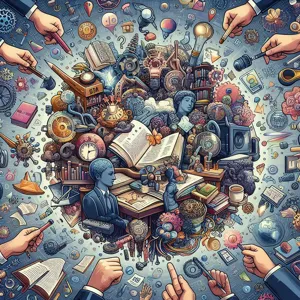
Literature has long been a powerful vehicle for expression, challenging societal norms and igniting fierce debates. From the very first tales spun around campfires to today’s bestsellers, books have the unique ability to reflect the complexities of human experience, often stirring our deepest convictions and fears. Controversial literature, in particular, pushes boundaries, provoking thought and discussion on topics that many would prefer to leave unexamined.
These works often delve into sensitive issues such as race, gender, politics, and morality, forcing readers to confront uncomfortable truths about themselves and their societies. They can incite outrage or inspire change, and their impact can ripple through time, shaping cultural landscapes and influencing generations. Whether through explicit language, radical ideas, or unsettling narratives, these books challenge the status quo and invite readers to reconsider their views.
In this blog post, we will explore a selection of the most controversial books that have not only disrupted literary conventions but also sparked significant dialogues within society. From classics that were banned in their time to modern novels that continue to ignite passionate debate, these works exemplify the power of literature to provoke, challenge, and ultimately transform our understanding of the world around us. Join us as we delve into the pages of history, examining the narratives that have dared to defy convention and the conversations they continue to inspire.
2. The Role of Books in Sparking Social Change
Books have long served as catalysts for social change, wielding the power to inspire, challenge, and mobilize communities. Throughout history, literature has provided a platform for marginalized voices, igniting conversations that often provoke discomfort but ultimately lead to progress. From the pages of Harriet Beecher Stowe’s “Uncle Tom’s Cabin,” which galvanized the anti-slavery movement, to George Orwell’s “1984,” a stark warning against totalitarianism, controversial books have a unique ability to shine a light on societal injustices and encourage readers to critically examine the world around them.
These literary works often confront prevailing norms, inviting readers to step outside their comfort zones and engage with challenging ideas. The provocative themes explored within these texts can lead to difficult discussions about race, gender, politics, and morality. For instance, Toni Morrison’s “Beloved” not only addresses the traumatic legacy of slavery but also forces readers to confront the haunting realities of its impact on identity and family. Similarly, books like “The Handmaid’s Tale” by Margaret Atwood have sparked conversations about women’s rights and bodily autonomy, resonating with contemporary movements advocating for gender equality.
Moreover, the accessibility of books in the digital age has amplified their influence, allowing ideas to spread rapidly across social media platforms. Online discussions surrounding these controversial titles can lead to book clubs, lectures, and public forums, creating spaces for dialogue and reflection. In this way, literature does not merely mirror society; it has the potential to reshape it, encouraging readers to advocate for change within their communities. As we explore the most controversial books that have shaken society, we uncover how their powerful narratives continue to inspire action and ignite conversations that matter.
3. Key Themes in Controversial Books
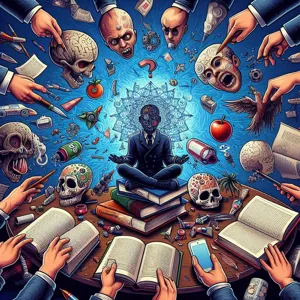
Controversial books often serve as mirrors to society, reflecting the complexities, struggles, and nuances of the human experience. They challenge the status quo and push boundaries, igniting conversations that resonate across generations. The key themes found in these provocative works frequently touch on subjects that provoke thought and debate.
One prevalent theme is **social justice and inequality**, which invites readers to confront uncomfortable truths about race, class, and gender. Books like “To Kill a Mockingbird” by Harper Lee and “The Hate U Give” by Angie Thomas shine a light on systemic injustice, compelling readers to empathize with marginalized voices and consider their roles in the pursuit of equity.
Another theme is **censorship and freedom of expression**. Works such as “Fahrenheit 451” by Ray Bradbury and “1984” by George Orwell explore the dangers of a society that suppresses dissenting views, warning against the potential consequences of allowing fear to dictate what can be said or thought. These narratives underscore the importance of protecting free speech, even when the ideas expressed are controversial or uncomfortable.
Additionally, **identity and self-discovery** resonate powerfully in controversial literature. Books like “The Bell Jar” by Sylvia Plath and “Fun Home” by Alison Bechdel delve into the intricacies of mental health, sexuality, and the journey towards understanding oneself. Such narratives not only challenge societal norms but also provide solace to those grappling with their own identities, reinforcing the idea that personal stories can be both deeply individual and universally relatable.
Lastly, **morality and ethical dilemmas** are common threads in many contentious texts. Books such as “Lolita” by Vladimir Nabokov and “The Handmaid’s Tale” by Margaret Atwood confront readers with stark moral questions, forcing them to examine their own beliefs and the societal constructs that inform them. These themes provoke intense discussions about right and wrong, often leaving readers with more questions than answers.
In essence, the themes prevalent in controversial books are not merely for shock value; they are vital in fostering dialogue, encouraging critical thinking, and ultimately shaping the society we live in. By engaging with these themes, readers are invited to explore the depths of human experience and reflect on the moral fabric of their world.
4. “The Catcher in the Rye” by J.D. Salinger: Challenging Norms
**4. “The Catcher in the Rye” by J.D. Salinger: Challenging Norms**
Published in 1951, J.D. Salinger’s “The Catcher in the Rye” has become emblematic of teenage angst and rebellion, stirring discussions that resonate even decades after its release. At its heart, the novel follows the disenchanted protagonist, Holden Caulfield, a young man navigating the tumultuous waters of adolescence in post-war America. Through Holden’s cynical lens, Salinger presents a critique of societal norms, exposing the facade of adulthood and the complexities of identity formation.
The novel’s frank exploration of themes such as alienation, loss, and the struggle against conformity ignited widespread debate upon its publication. Holden’s disdain for the “phoniness” of the adult world struck a chord with readers, particularly the youth, who often grappled with feelings of isolation and the pressure to conform. Salinger’s candid portrayal of mental health issues, sexuality, and the disillusionment of youth challenged the conservative values of the time, prompting both praise and condemnation.
Moreover, “The Catcher in the Rye” became a lightning rod for controversy, facing bans in schools and libraries across the United States due to its explicit language and challenging themes. Critics argue that its unfiltered examination of teenage life is essential for understanding the complexities of growing up, while detractors label it as morally ambiguous. This dichotomy has kept the book in the public eye, sparking discussions about censorship, the responsibilities of literature, and the evolving nature of societal values.
Ultimately, Salinger’s work transcends its time, inviting readers to reflect on their own experiences of adolescence and the societal pressures that accompany the transition into adulthood. As “The Catcher in the Rye” continues to provoke thought and challenge norms, it remains a powerful testament to the struggles of youth and the enduring quest for authenticity in a world often defined by superficiality.
5. “1984” by George Orwell: Dystopian Warnings and Surveillance
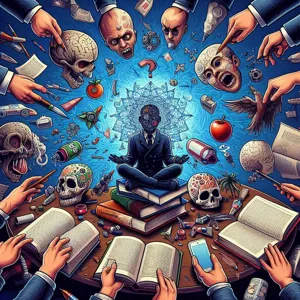
“1984” by George Orwell is more than just a novel; it’s a chilling prophecy that continues to resonate with readers decades after its publication. Set in a totalitarian society where the omnipresent Party wields absolute power over every aspect of life, the book serves as a stark warning against the perils of unchecked authority and the erosion of personal freedoms. Orwell paints a vivid picture of a world governed by constant surveillance, where individualism is crushed under the weight of oppressive ideology.
The concept of “Big Brother,” an ever-watchful figure representing the Party’s surveillance state, has entered our cultural lexicon as a symbol of invasive governance and privacy infringement. Orwell’s portrayal of a society where even thoughts can be policed—through the concept of “thoughtcrime”—forces readers to confront uncomfortable truths about the fragility of truth and the manipulation of language. The language of Newspeak, designed to eliminate dissent by reducing the complexity of thought, serves as a poignant reminder of how language can be weaponized to control and subjugate.
As we navigate an era marked by rapid technological advancements and increasing governmental oversight, “1984” takes on new significance. The book ignites conversations about the balance between security and freedom, the responsibilities of citizenship, and the impact of technology on personal privacy. It challenges us to reflect on our own societal structures and the potential consequences of complacency in the face of encroaching authoritarianism. Through its disturbing yet compelling narrative, “1984” beckons us to remain vigilant and to question the world around us—making it a timeless literary artifact that continues to shake society to its core.
6. “To Kill a Mockingbird” by Harper Lee: Race and Justice
“To Kill a Mockingbird,” penned by Harper Lee and published in 1960, stands as a monumental work that delves deep into the intertwined issues of race and justice in America. Set in the fictional town of Maycomb, Alabama, during the 1930s, the novel is narrated through the eyes of young Scout Finch, whose coming-of-age story unfolds against the backdrop of her father’s defense of a Black man, Tom Robinson, unjustly accused of raping a white woman.
At its core, the book tackles the pervasive racism and social injustices that plagued the American South, forcing readers to confront uncomfortable truths about their own society. Through Scout’s innocent perspective, Lee masterfully illustrates the deep-seated prejudices that permeate the lives of the town’s residents. The trial of Tom Robinson becomes not only a pivotal moment in the narrative but also a powerful commentary on the systemic inequalities embedded in the legal system. It challenges readers to question the morality of a society that allows racial biases to dictate justice.
The character of Atticus Finch, Scout’s father and moral compass, embodies integrity and empathy, standing firm against the tide of racism and discrimination. His unwavering commitment to doing what is right serves as a beacon of hope and a call to action for readers, encouraging them to engage in conversations about equity and justice that remain relevant today.
Despite its initial reception, which included criticism for its portrayal of race relations, “To Kill a Mockingbird” has become a staple in American literature, studied and debated in classrooms across the country. It ignites conversations about prejudice, morality, and the importance of standing up for what is right, making it a timeless read that continues to resonate with contemporary audiences. As society grapples with issues of racial injustice and inequality, Harper Lee’s poignant narrative serves as a crucial reminder of the power of literature to challenge perceptions and ignite meaningful dialogue.
7. “The Satanic Verses” by Salman Rushdie: Freedom of Expression and Faith
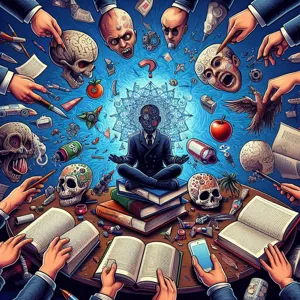
“The Satanic Verses” by Salman Rushdie remains one of the most provocative and discussed novels in contemporary literature, igniting fervent debates around freedom of expression and the intricacies of faith. Published in 1988, the book weaves together the stories of two Indian expatriates in England who grapple with their identities and beliefs amid the backdrop of cultural clash and religious scrutiny. Rushdie’s narrative boldly explores themes of faith, doubt, and the often tumultuous relationship between the two.
However, the novel’s portrayal of Islamic beliefs and its imagined retelling of the life of the Prophet Muhammad sparked an outrage that reverberated across the globe. Accusations of blasphemy led to widespread protests, book burnings, and even a fatwa issued by Iran’s Ayatollah Khomeini, condemning Rushdie to death. This dramatic response not only placed Rushdie’s life in peril but also raised profound questions about the limits of artistic expression and the consequences of challenging religious dogma.
“The Satanic Verses” invites readers to confront the tension between cultural sensitivity and the right to free speech. It serves as a reminder that literature can provoke thought and dissent, but it can also incite fear and outrage. The book’s legacy continues to influence discussions on censorship, the role of art in society, and the delicate balance between respect for faith and the freedom to challenge it. Whether viewed as a bold critique of religion or a violation of sacred beliefs, Rushdie’s work undeniably remains a touchstone in the ongoing conversation about the power of words and the risks associated with speaking truth to power.
8. “Fifty Shades of Grey” by E.L. James: Sexuality and Feminism
“Fifty Shades of Grey” by E.L. James burst onto the literary scene like a bolt of lightning, igniting passionate discussions about sexuality, power dynamics, and the modern feminist movement. Initially published as fan fiction, this novel quickly evolved into a global phenomenon, captivating millions with its steamy narrative and complex characters. At its core, “Fifty Shades of Grey” explores the intricate relationship between Anastasia Steele, a naive college graduate, and Christian Grey, a wealthy entrepreneur with a penchant for BDSM.
However, the book’s portrayal of sexual relationships has been met with mixed reactions. Critics argue that it romanticizes unhealthy dynamics and perpetuates stereotypes regarding dominance and submission. Detractors point to the lack of informed consent and the blurred lines between love and control, sparking debates about the implications for readers’ understanding of healthy sexual relationships. On the other hand, supporters champion the book for its bold exploration of female sexuality and empowerment, arguing that it gives women the freedom to express their desires without shame.
As readers flocked to bookstores to purchase the trilogy, “Fifty Shades of Grey” became a cultural touchstone, prompting discussions in book clubs, media outlets, and even academic circles. It challenged traditional norms surrounding erotic literature, paving the way for more open conversations about sexual preferences and the complexities of consent. Regardless of where one stands in the debate, the impact of E.L. James’ work is undeniable; it has left an indelible mark on the landscape of contemporary literature and has undoubtedly contributed to the ongoing dialogue surrounding sexuality and feminism in today’s society.
9. “The Bell Jar” by Sylvia Plath: Mental Health Awareness
“The Bell Jar” by Sylvia Plath remains a profound exploration of mental health that has resonated with readers since its publication in 1963. Through the semi-autobiographical lens of its protagonist, Esther Greenwood, Plath delves into the struggles of depression and societal expectations faced by women in the 1950s. The novel’s haunting narrative captures Esther’s descent into mental illness, presenting a stark and unfiltered portrayal of her internal battles.
What sets “The Bell Jar” apart is its raw honesty and poetic brilliance. Plath’s evocative prose articulates feelings of isolation and despair in a way that feels both personal and universal, inviting readers to empathize with Esther’s plight. The titular “bell jar” symbolizes the suffocating nature of mental illness, trapping Esther in a world that feels both stifling and inescapable—a metaphor that continues to resonate with many today.
In an era where discussions around mental health were often shrouded in stigma and misunderstanding, Plath’s work was revolutionary. It ignited conversations about the importance of mental health awareness and the struggles that can often go unseen. The novel’s candid exploration of therapy, societal pressures, and the quest for identity challenged the norms of its time and paved the way for more open discussions about mental health.
As readers delve into “The Bell Jar,” they are not only confronted with a poignant narrative but also reminded of the significance of empathy and understanding in the face of mental health challenges. Sylvia Plath’s hauntingly beautiful tale continues to inspire new generations, encouraging them to break the silence surrounding mental health and fostering a greater understanding of the complexities of human experience.
10. “Brave New World” by Aldous Huxley: Technology and Human Nature
“Brave New World,” penned by Aldous Huxley in 1932, is a provocative exploration of technology’s impact on human nature and societal structure. Set in a dystopian future where humanity is engineered for conformity and contentment, Huxley crafts a narrative that challenges the reader’s perceptions of happiness, freedom, and individuality. The novel introduces us to a world where people are genetically designed, conditioned from birth to fit predetermined roles, and kept placid through the use of a drug called Soma—a government-issued substance that numbs discomfort and promotes a superficial sense of well-being.
What makes “Brave New World” particularly controversial is its unsettling portrayal of a society that prioritizes technological advancement and social stability over authentic human experiences. Huxley raises critical questions about the cost of progress: at what point does the pursuit of a utopian society become a form of control? The characters, particularly the tragic figure of John the Savage, embody the struggle between natural human instincts and societal expectations, forcing readers to confront the implications of sacrificing depth and individuality for the sake of superficial happiness.
The book’s themes resonate strongly today, as we navigate an era dominated by rapid technological advancements, from artificial intelligence to genetic engineering. Huxley’s cautionary tale serves as a timely reminder of the potential dangers of losing touch with our humanity in the quest for convenience and uniformity. “Brave New World” ignites conversations about the ethical boundaries of technology and the essence of what it means to be truly human, making it a timeless classic that continues to stir debate and reflection in contemporary society.
11. “The Handmaid’s Tale” by Margaret Atwood: Gender and Power Dynamics
Margaret Atwood’s “The Handmaid’s Tale” is a powerful exploration of gender and power dynamics that resonates deeply in contemporary society. Set in the dystopian Republic of Gilead, the novel presents a chilling vision of a future where a theocratic regime has stripped women of their rights and autonomy, relegating them to the roles of Handmaids, Wives, and Marthas. Through the eyes of Offred, the protagonist, Atwood deftly navigates the complexities of a world where women are valued solely for their reproductive capabilities, raising urgent questions about autonomy, identity, and the consequences of extreme patriarchal control.
At its core, “The Handmaid’s Tale” serves as a stark warning against the erosion of women’s rights, drawing parallels to historical and contemporary issues surrounding gender inequality. The novel ignites conversations about bodily autonomy, reproductive rights, and the insidious ways in which power can manipulate societal norms. Atwood’s portrayal of Gilead’s rigid caste system—where women are stripped of their names, identities, and rights—challenges readers to reflect on the potential ramifications of complacency in the face of oppressive ideologies.
The book’s impact has only grown over the years, particularly in the wake of various political movements advocating for women’s rights. Its adaptation into a critically acclaimed television series has further amplified its relevance, sparking discussions about the fine line between fiction and reality. As readers grapple with the unsettling questions posed by Atwood, “The Handmaid’s Tale” remains a poignant reminder of the fragility of freedom and the importance of vigilant resistance against authoritarianism. In a world where conversations about gender and power are more crucial than ever, Atwood’s novel stands as a rallying cry, urging society to confront and challenge the structures that seek to oppress.
12. The Impact of Controversial Books on Literature and Society
Controversial books have an undeniable power to ignite conversations, challenge societal norms, and provoke thought. Their impact on literature and society is profound, often serving as catalysts for change in public discourse. When a book dares to tread into contentious territory—be it through themes of race, gender, politics, or morality—it invites readers to confront their beliefs and question the status quo.
From the moment they hit the shelves, these works often become flashpoints for debate. They can lead to protests, bans, or heated discussions in classrooms and book clubs alike. Such reactions underscore the vital role literature plays in shaping societal perspectives. For instance, classics like “To Kill a Mockingbird” and “1984” not only tell compelling stories but also shine a light on injustices, prompting readers to reflect on their own society’s flaws.
Moreover, the ripple effects of these books extend beyond their immediate readership. They inspire other writers to take risks and explore themes that resonate with their own experiences and observations. The resulting body of literature can create a rich tapestry that mirrors the complexities of human experience, fostering empathy and understanding among diverse groups.
The legacy of controversial books is not merely in their content but in their capacity to spark dialogue. They push boundaries and compel us to engage with difficult subjects, ultimately encouraging progressive thought and action. In a world that often shies away from uncomfortable conversations, these literary works serve as essential touchstones for examining the interplay between culture and individual beliefs, ensuring that the dialogue continues long after the final page is turned.
13. How to Engage in Conversation About These Books
Engaging in conversation about controversial books can be both exhilarating and challenging. These texts often evoke strong emotions and provoke critical thinking, making them ripe for discussion. To navigate these conversations effectively, it’s essential to create an open and respectful environment where differing opinions can flourish. Here are some strategies to help foster engaging discussions around these provocative works.
First and foremost, approach the topic with curiosity rather than judgment. When introducing a controversial book, share what intrigued you about it and invite others to express their initial thoughts. Phrasing questions like, “What was your interpretation of the author’s message?” encourages a dialogue rather than a debate. This openness can lead to deeper insights and unexpected perspectives.
Listening actively is equally important. Show genuine interest in others’ viewpoints, even if they starkly contrast with your own. Paraphrasing their thoughts or asking follow-up questions can show that you value their input. This respect can help diffuse tensions and create a more collaborative atmosphere for discussion.
Another effective strategy is to focus on specific themes or ideas presented in the book. For instance, if discussing a book that tackles social justice issues, delve into the historical context or modern implications of the themes. This can lead to rich discussions that go beyond personal opinions, allowing participants to explore broader societal implications and connect the text to real-world scenarios.
Encourage participants to share personal experiences related to the book’s themes. Personal anecdotes can provide powerful insights and help illustrate why certain topics resonate deeply. However, remind everyone to be mindful of the diversity of experiences in the room, as sensitive subjects may elicit varying emotional responses.
Lastly, don’t shy away from discomfort. Controversial topics can stir heated debates, but it’s often in these moments of tension that the most meaningful conversations occur. Equip yourself with strategies for de-escalating potential conflicts—such as taking a moment of silence to reflect, inviting quieter voices to share their thoughts, or gently steering the conversation back to the text itself.
In essence, engaging in conversation about controversial books requires a blend of curiosity, respect, and openness to different perspectives. By fostering an environment where dialogue can thrive, you can ignite insightful discussions that not only deepen understanding of the text but also enhance connections among participants, ultimately enriching the literary experience for everyone involved.
14. The Future of Controversial Literature
The landscape of controversial literature is continuously evolving, reflecting the shifting values, beliefs, and tensions within society. As we look to the future, it’s clear that this genre will remain a powerful force in igniting conversations and challenging the status quo. With the rise of digital platforms and self-publishing, voices that once might have been marginalized are finding ways to reach wider audiences. This democratization of literature enables diverse perspectives to emerge, often provoking heated debates and discussions.
Moreover, as societal issues such as climate change, racial inequality, and gender rights become more pronounced, authors are increasingly using their platforms to address these themes head-on. Readers are drawn to narratives that not only entertain but also provoke thought and inspire action. Books like Roxane Gay’s *Hunger* or Chimamanda Ngozi Adichie’s *Americanah* are perfect examples of how literature can serve as a mirror to contemporary issues, challenging readers to reflect on their own beliefs and biases.
In addition, the rise of social media has transformed the way readers engage with controversial literature. Online forums and book clubs facilitate discussions that extend beyond the pages of a book, allowing for a vibrant exchange of ideas and interpretations. This connectivity fosters a sense of community among readers, who may find solace and solidarity in shared experiences and perspectives.
As we venture into this new era, we can expect controversial literature to become even more dynamic and multifaceted. Authors will continue to push boundaries, challenge norms, and provoke thought, ensuring that the written word remains a catalyst for change. The future of controversial literature is not just about the books themselves, but about the dialogues they spark and the impact they have on our collective consciousness. In a world where conversations about difficult topics are often stifled, these literary works will play a crucial role in fostering understanding, empathy, and ultimately, progress.
15. Conclusion: The Importance of Dialogue in Literature
In an age where polarization often dominates the discourse, literature remains a powerful catalyst for dialogue and understanding. The controversial books we’ve explored not only challenge societal norms but also provoke essential conversations that can lead to greater empathy and awareness. They remind us that literature is not merely an escape; it’s a mirror reflecting the complexities of our world.
Engaging with these texts encourages readers to grapple with uncomfortable truths, broadening their perspectives and inviting them to question their own beliefs. Whether it’s through fiction that explores taboo subjects or non-fiction that sheds light on contentious issues, these works serve as a springboard for discussions that can bridge divides and foster connections among diverse individuals.
The importance of dialogue in literature cannot be overstated. It allows us to confront our biases, understand differing viewpoints, and cultivate a culture of openness. As we navigate the intricacies of human experience—be it through the pages of a book or the conversations that ensue—we are reminded that literature has the power to ignite change, inspire action, and ultimately, shape society.
In conclusion, let us embrace the controversial, the uncomfortable, and the thought-provoking. By engaging with these challenging texts and fostering dialogue around them, we not only enrich our own understanding but also contribute to a more inclusive and thoughtful society. After all, it is through these conversations that we can begin to bridge the gaps that divide us, paving the way for a more compassionate world.
In conclusion, the power of literature to ignite conversations and challenge societal norms is undeniable, as evidenced by the controversial books we’ve explored in this post. Each title serves not only as a reflection of its time but also as a catalyst for thought-provoking discussions that transcend generations. These works compel us to confront uncomfortable truths, reexamine our beliefs, and engage in dialogues that can lead to meaningful change. As you delve into these books, consider how their themes resonate in today’s world and how they might inspire you to join the conversation. Embrace the discomfort, share your insights, and let these literary provocateurs guide you toward a deeper understanding of the complexities that shape our society. Happy reading!

